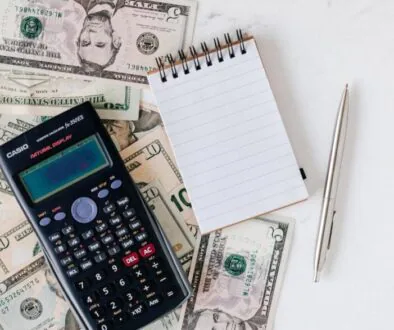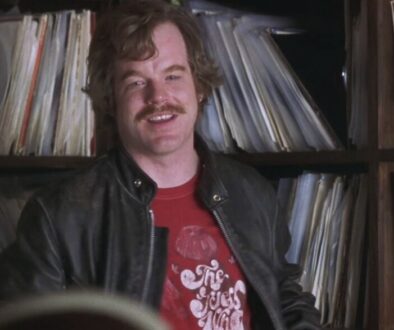SPEND, BORROW AND PRINT
“We’re not going to save our way out of recession. We’ve got to spend our way out of this recession, and I think most economists know that.”
Rep. James Clyburn D-SC (third-ranking house leader)
President Obama recently signed the borrowing authority that grants the government to borrow an additional $1.9 trillion raising the debt ceiling to $14.3 trillion. Some perspective on that $1.9 trillion, from the Associated Press…
A 1.9 trillion mile trip is approximately 8 million trips to the moon. It is $6,000 for every man woman and child in the United States. It is twice all the money spent on military operations in Iraq and Afghanistan since 2001. It would buy 422 Nimitz Class aircraft carriers. It would provide Pell grants of $5,000 to some 380 million students, which is a greater number than our entire population. 1.9 trillion seconds adds up to 60,000 years. 1.9 trillion hours is almost 220 million years ago, where dinosaurs were just beginning to dominate the Earth and Robert Byrd first started serving in the Senate.
Some facts regarding the concept known as “spending our way out of a recession.” From the Heritage Foundation…
During the 1930’s, New Deal lawmakers doubled federal spending yet unemployment remained above 20 percent until World War II. Japan responded to a 1990 recession by passing 10 stimulus spending bills over 8 years (building the largest national debt in the industrialized world) yet its economy remained stagnant. In 2001, President George W. Bush responded to a recession by “injecting” tax rebates into the economy. The economy did not respond until two years later, when tax rate reductions were implemented. In 2008, President Bush tried to head off the current recession with another round of tax rebates which we called the Incumbent Protection Act. The recession worsened. Most recently we have the $787 billion Obama stimulus package (the biggest chunk of prosciutto ever). We were told it would keep unemployment from exceeding 8%.
The sad reality is the era of big government has returned, and it is not just the fault of the current administrations. The federal workforce will grow to 2.15 million employees in 2010 topping the 2 million mark for the first time since President Bill Clinton stated that “the era of big government is over.” The average federal employee makes over $70k a year in salary where the average private sector employee makes over $40k. The percentage of federal civil servants making more than $100,000 a year jumped from 14 percent to 19 percent. At the beginning of the current economic downturn the Transportation Department had one person making $170,000 or more a year; now it has 1,690 making that amount. Rich Lowry of National Review stated, “Public employees have developed an inverse relationship to the rest of the economy, as it shrinks, shredding jobs and cutting salaries; they draw on a never-ending taxpayer bounty. It used to be said that the Great Depression wasn’t so bad, if you had a job. The Great Recession has practically been a boom, if you have a government job.”
The economic ideas that are being practiced today were built on the work of John Maynard Keynes over eighty years ago. He believed that it was the duty of government to kick start economies mired in recession with spending. Keynes once stated that a government program that pays people to dig and refill ditches would provide new income for those workers to spend and circulate through the economy, creating even more jobs and income. So basically the true believers in our government today could care less about the bridges to nowhere, the tunnels for turtles or the litany of other pork projects. Following the beliefs of their favorite economist, they are a doing great and noble work. Keynesian economics also assumes that consumption spending adds to immediate economic growth while savings do not. By this reasoning, unemployment benefits, food stamps, and low income tax rebates are among the most effective stimulus policies, because of their likelihood to be consumed rather than saved. Utilizing this logic we should continue to hope for more layoffs and poverty because it will lead to an economic boom.
The multi-trillion dollar question…“If Congress can supply/inject/print new money into our economy that will increase demand and production; where does the government acquire the money it pumps in?”
Whenever, my kids do something careless or downright dumb, I let them know about it with a simple “Duh!” My wife hates it when I say it to the kids, but they seem to get the message after I give them a complete play-by-play of their breakdown in brain function.
Keynesian true-believers are Duh! They are the most incredulous group of people ever. They seem to believe that there is some magic money giving-tree somewhere that Shel Silverstein forgot to write about. The sad reality for all these kool-aide drinkers is that for every dollar Congress injects into the economy, it must first be printed, taxed, or borrowed out of the economy. Wealth is redistributed.
Another way to create some economic action is to print money. However, revving-up the printing press is much like drinking a case of Red Bull. Sure, you feel like Superman for awhile, but eventually you are going to crash. Printing money devalues the currency and wealth for all except…the debtor. The debtor wants an inflationary environment because they end up paying back less due to the currency devaluation. If printing massive amounts of money actually worked, the logical extension would be to allow citizens to print as much money as we wished off our desktop computers and printers. Bonus: It would be great for Staples and Hewlett Packard, think of all the paper and toner they would sell.
I would not touch U.S. treasuries, yet our foreign banker friends continue to indulge us. When our fearless leaders borrow money, the balance of payments will adjust by raising net imports, leaving total demand and output unchanged.
The Heritage Foundation presents the following example…
Lawmakers claim that every $1 billion in highway stimulus can create 47,576 new construction jobs. But Congress must first borrow that $1 billion from the private economy, which will then lose at least as many jobs. The total job loss is likely to be greater because highway construction is relatively capital-intensive and its jobs pay higher wages, leading to fewer numbers of workers being hired. Highway spending simply transfers jobs and income from one part of the economy to another. Economist Ronald Utt states, “The only way that $1 billion of new highway spending can create 45,576 new jobs is if it were manna from heaven.”
President Obama’s latest budget highlights include: Permanently expand the federal government by nearly 3 percent of gross domestic product (GDP) over 2007 pre-recession levels. Raise taxes on all Americans by more than $2 trillion over the next decade (counting health care reform and cap and trade). Raise taxes for $3.2 million small businesses and upper-income taxpayers by an average $300,000 over the next decade. Borrow 42 cents for each dollar spent in 2010. Run a $1.6 trillion deficit in 2010. Leave permanent deficits that top $1 trillion in as late as 2020. The budget will double the publicly held national debt to over $18 trillion.
In my opinion, this is some pretty depressing stuff. In fact, the way we are pushing our debts on to our children I would describe our fiscal habits as an example of child abuse. But, before sucking down a cup of Socrates hemlock tea, according to a recent Rasmussen poll, Americans are finally starting to wake up. Only 11% of Americans think the nation needs to increase its deficit spending at this time. 70% feel it would be better to cut the deficit. 59% feel that Keynes had it all wrong, and that increasing the deficit at this time would hurt the economy rather than help. 56% of Americans believe that cutting the deficit is the way to go. 83% of Americans state that the size of the federal budget deficit is due more to the unwillingness of politicians to cut government spending than the reluctance of taxpayers to pay more in taxes.
I hope that Americans also realize that the deficit spending did not begin with the Obama administration. Fact: Both parties are guilty of ridiculously imprudent behavior. Another fact: We are ultimately responsible. We put these people in office. We allowed for the growth of the welfare state. We have to put a stop to it.
Source Material:
Riedl Brian Why Government Spending Does Not Stimulate Economic Growth The Heritage Foundation 1/5/10
Riedl Brian Obama Budget Seeks $2 Trillion More in Spending and Deficits Than Last Year The Heritage Foundation 2/1/10
Americans Reject Keynesian Economics Rasmussen Reports 2/5/10
Dinan Stephen Largest-ever Federal Payroll to Hit 2.15 Million Washington Times 2/2/10
O’Brien Michael Clyburn: We’ve Got To Spend Our Way Out Of This Recession The Hill 2/1/10
How Big is $1.9 Trillion Associated Press 2/4/10
Lowry Rich It’s Boom-Time For Public Employees Real Clear Politics 2/5/10




